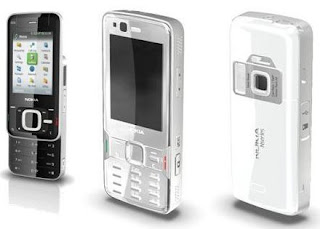Just enter http://www.operamini.com/beta/ on your phone browser to download the new version. Some screenshots from Opera Mini on the N95 below:
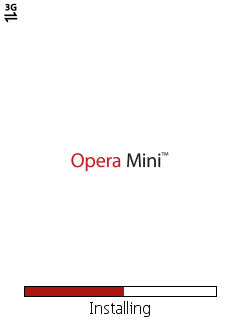

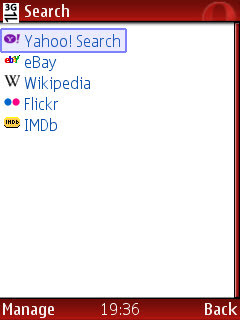
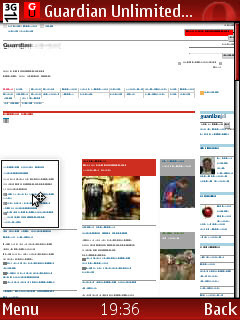

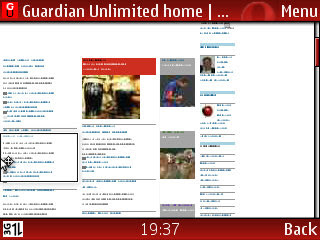
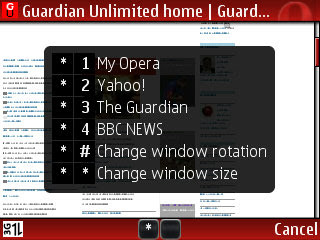









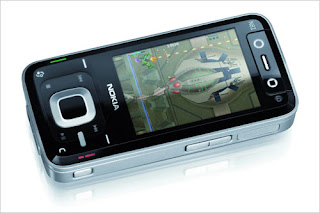

Meet Ovi, the door to Nokia's Internet services
Music, games and maps among the first Ovi services
Nokia today introduced Ovi, the company's new Internet services brand name. With the introduction of Ovi, Nokia is expanding from a focus on mobile devices to offering a range of Internet services. Ovi, meaning 'door' in Finnish, enables consumers to easily access their existing social network, communities and content, as well as acting as a gateway to Nokia services.
As part of Ovi, Nokia announced the Nokia Music Store and N-Gage, two services that make it easy for people to discover, try and buy music and games from a blockbuster range of artists and publishers, including exclusive content only available through Nokia. Also under the Ovi umbrella is Nokia Maps, a navigation service that offers maps, city guides and more directly to compatible mobile devices. Nokia aims to bring more Internet based services to Ovi in the coming months.
Speaking at the Nokia Go Play event in London, Nokia President and Chief Executive Officer Olli-Pekka Kallasvuo presented Ovi and the new Nokia services for consumers, and spoke about the company's future plans as an Internet company: "The industry is converging towards Internet driven experiences and Ovi represents Nokia's vision in combining the Internet and mobility. Nokia is the number one mobile device company in the world. Looking into the future, we will deliver great devices, combined with compelling experiences and services, to make it easy for people to unlock the potential of the Internet."
"We started this journey with our navigation services earlier this year and we are now combining all our services into a single branded offering - Ovi by Nokia. Over the coming 12 months, you will see us integrate new user interface elements, service suites and web communities to Ovi," added Kallasvuo.
Ovi - one key opens every door.
Ovi (http://www.ovi.com) is the gateway to Nokia's Internet services, including the Nokia Music Store, Nokia Maps, and N-Gage games. It will also be an open door to web communities, enabling people to access their content, communities and contacts from a single place, either directly from a compatible Nokia device or from a PC. The first version of Ovi.com is scheduled to go live in English during the fourth quarter of 2007 and additional features and languages expected to go live during the first half of 2008.
Nokia Music Store - all the world's music in your pocket
The Nokia Music Store (http://music.nokia.com) offers millions of tracks from major artists, independent labels as well as a broad range of local artists from around the world. The store is accessible via a desktop computer or directly from a compatible Nokia device, such as the Nokia N81 or Nokia N95 8GB multimedia computer. Browse for new music, buy what you like or add a song to your wishlist to download later. You can easily transfer your purchased songs to your mobile device and with the built-in music player, create playlists on the go and manage your music collection.
The Nokia Music Store offers full track streaming on your PC as well as individual track and album purchase. The dynamic recommendation engine and genre-based instant playlists provide access to show you what others are enjoying. The store opens across key European markets this fall with additional stores in Europe and Asia opening over the coming months. In Europe, individual tracks cost EUR 1.00 and albums from EUR 10.00, with a monthly subscription for PC streaming for EUR 10.00.
N-Gage - mobile gaming experience
N-Gage offers an easy way to find, try and buy great quality games directly from your compatible Nokia device. Selecting the N-Gage application on your compatible Nokia device, you can preview available games, connect with your friends, read reviews or download a free demo. Buying games is easy, either with a credit card or by charging to your monthly phone bill. Companies like Electronic Arts and Gameloft are making some of their biggest brands available through N-Gage. The application is expected to be available for download from www.n-gage.com in November 2007.
"We know that people want integrated access to great content without the constraints of having to sit behind a computer or in front of a TV. With the Nokia Music Store and N-Gage services, you can access the best in music and games directly from your Nokia Nseries multimedia computer," said Anssi Vanjoki, executive vice president and general manager, Multimedia, Nokia. "We expect the mobile device to become the most popular platform - the 'fourth screen' - for enjoying your digital content. Ovi brings our Internet services vision to life, where people can create, share and consume facts, feelings and emotions wherever and whenever."








There has never been a better time to accessorize your multimedia computer or mobile phone, now that Nokia has introduced the ultimate enhancements in design and functionality, optimized to transform your device into a super power machine. The iconic Nokia Nseries design is reflected in these sleek new enhancements, ready to complement your multimedia computer.
Morph your Mobile into a GPS: Nokia Bluetooth GPS Module LD-4W
The Nokia Bluetooth GPS Module LD-4W combines Nseries style in a slim and attractive core with navigation, so you can find your way around easily with your compatible mobile device. Continuing on our mission to bring location based services to even more people, this GPS module is compatible with a wide range of Nokia devices and Nokia Maps. Take your time getting to your destination - this lightweight (31 g) GPS module has up to 10 hours of operating time. The sleekly designed black and metallic module comes with a LED indicator to alert you to GPS activation, power and battery status, and Bluetooth connectivity status. The GPS module will be available globally and cost an estimated 125 euro without taxes.
Groove on the Move: Nokia Bluetooth Stereo Headset BH-903
A high quality, sleekly designed stereo headset - the Nokia Bluetooth Headset BH-903 is the complete package for your music enjoyment. The headset is Bluetooth compliant, supporting compatible devices with Bluetooth A2DP, AVRCP, PBAP, HFP and HSP profiles*, so you can conveniently pair it with a compatible mobile device or other music player. It acts as a state-of-the art remote control with an OLED display, so while you're rocking away you can control your music and your calls. If a call interrupts your favorite tunes, the Nokia Bluetooth Stereo Headset BH-903 will switch automatically to talk mode and return to the music after the call. Weighing in at 32 grams, the headset is a multifunctioning companion to your life on the move. Enjoy up to 15 hours of talk/music time. The Nokia Bluetooth Stereo Headset BH-903 will cost an estimated 200 euro without taxes and will be available globally.
Take the Talk Out: Nokia Bluetooth Headset BH-902
Enjoy crisp and clear conversations while you're on the run with the Nokia Bluetooth Headset BH-902. Packaged in a sleek design with an OLED display, this headset brings you superior audio quality thanks to enhanced Digital Signal Processing (DSP). Designed with you in mind, the OLED display is intuitive to use for easy call and connection management straight from your headset. The OLED display even conveniently indicates when you've received a MMS or SMS message. With an in-box neckstrap, clip and flexible in-ear earplugs, the Nokia Bluetooth Headset BH-902 is accessible when you need it the most without compromising on comfort. Talk to your friends and colleagues for up to eight hours with this headset, weighing in at 18.2 grams. The Nokia Bluetooth Headset BH-902 will cost an estimated 115 euro without taxes and will be available globally.
Big Sound, Small Package: Nokia Bluetooth Speakers MD-7W
The crystal clear, powerful stereo sound of the Nokia Bluetooth Speakers MD-7W will keep you pumping up the volume on the go. Big sound is a promise these speakers can keep - 3D stereo widening sound and dynamic bass control equals a strong bass performance. The speakers are developed in cooperation with D & M Premium Sound Solutions and styled in the premium finish of Nokia Nseries. This compact package comes with magnetic attachments for easy portability and a LED indicator for on/off, pairing mode and battery status. Available globally, the Nokia Bluetooth Speakers MD-7W will cost an estimated 130 euro, without taxes.
Packed with Power: Nokia Power Pack DC-1
A busy lifestyle means you may not always be conveniently near a power outlet when you need one - but now you can be. The Nokia Power Pack DC-1 has reserve power in a pretty and portable package, so you can take the equivalent of up to three batteries** with you and recharge your mobile device when you most need it. Compatible with Nokia 2mm charging interfaces, the power pack has two charge output cables so you can easily charge two devices at the same time. Available globally, it will cost an estimated 105 euro, without taxes.
These enhancements will be available globally from the fourth quarter of 2007.
*When supported by a compatible mobile device
**with battery capacity of 950 mAh
Nokia and Microsoft to deliver Windows Live services to millions of mobile customers
Industry leaders join forces to bring Web services to Nokia devices
Nokia, the world's largest mobile device manufacturer, and Microsoft, a global leader in online communications and communities, have joined together to provide customers with a new suite of Windows Live services specifically designed for Nokia devices. Starting today Nokia customers in eleven countries with compatible S60 devices can download the new suite enabling access to Windows Live Hotmail, Windows Live Messenger, Windows Live Contacts and Windows Live Spaces. Starting next year, customers who purchase compatible Nokia Series 40 handsets will also have access to these popular Windows Live services.
Nokia and Microsoft are empowering the "mobile lifestyle," by providing mobile customers with easy access to their world of online relationships, information and interests. By enabling access to Windows Live services on both the Nokia S60 and Series 40 platforms using standard web services protocols our mutual customers will have the power to seamlessly move between contacts, mail, messenger, phone calls, text messaging, camera, gallery and browsing all in an integrated way.
"By taking advantage of the extensive and agile distribution network that Nokia has, we have the opportunity to bring the power of Windows Live services to Nokia devices, thus ensuring our customers can take their most important online information with them on the go," said Jari Pasanen, vice-president, Strategy and Technology, Nokia Multimedia
Nokia customers who own the Nokia N73, N76, N80 Internet Edition, N93i, and the N95 multimedia computers can get the Windows Live services via the Download! application in the following countries; Denmark, Finland, France, Germany, Netherlands, Norway, Spain, UK, Sweden, Saudi Arabia and the UAE. Customers can visit http://www.nokia.com/windowslive to learn more, and check if their country is on the availability list. Initially the service will be available as a free trial and then customers in select markets wishing to continue using the service may be asked to pay a monthly fee.
"The availability of Windows Live services for Nokia's devices demonstrates our commitment to delivering great mobile experiences and extending people's online lives - taking it from the PC to the device," said Steve Berkowitz, senior vice president of the Online Services Business from Microsoft. "The alliance will enable a much broader group of consumers to experience the benefits Windows Live has to offer, easily connecting them to the information and people that matter most from virtually anywhere."
Today's announcement builds on the existing co-operation between Nokia and Microsoft, which integrated Microsoft's Live Search for Mobile into the Nokia Mobile Search application. Nokia also plans to extend this service onto the Series 40 platform to enhance the search experience across a greater range of devices.
 Nokia announced the launch of the Nokia N73 Special Edition which will be initially exclusively available in the Middle East and North Africa markets.
Nokia announced the launch of the Nokia N73 Special Edition which will be initially exclusively available in the Middle East and North Africa markets..jpg)
